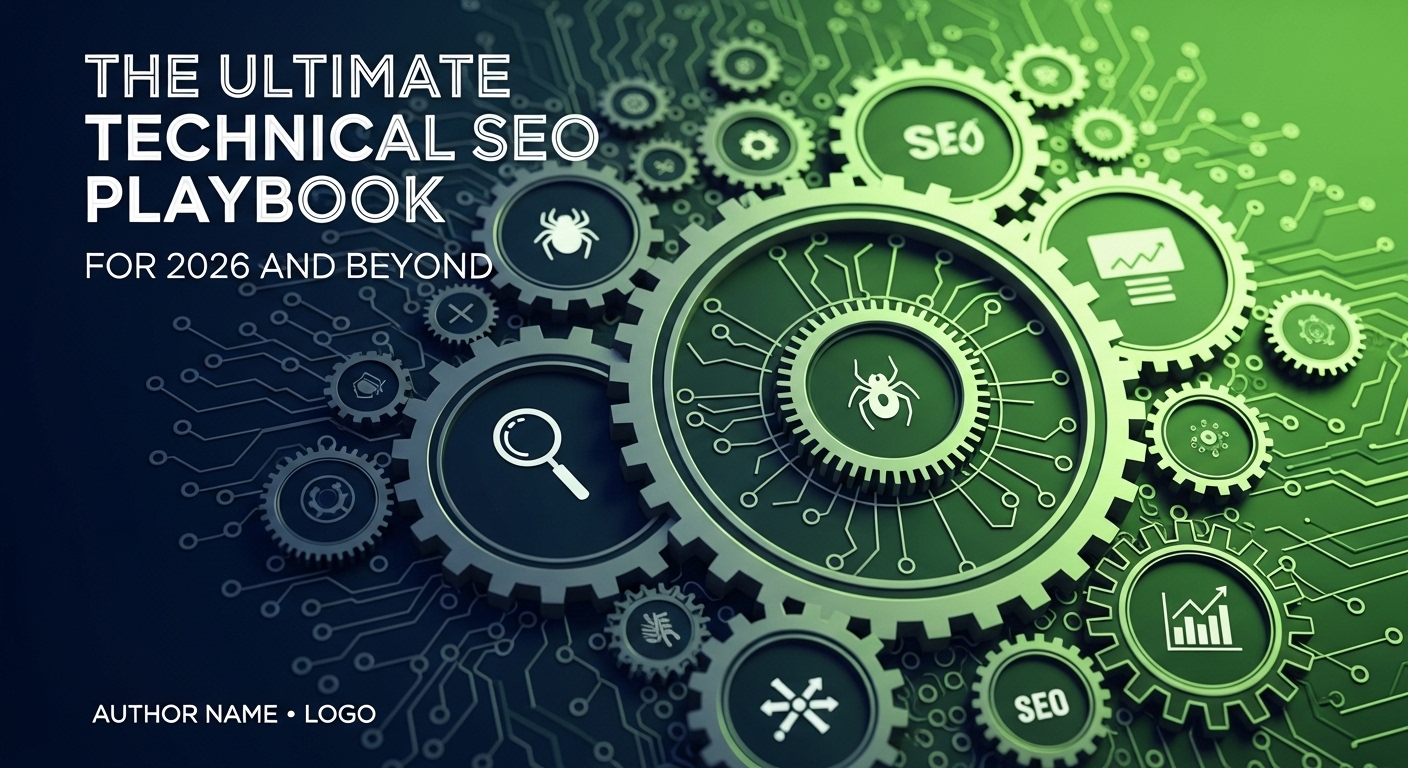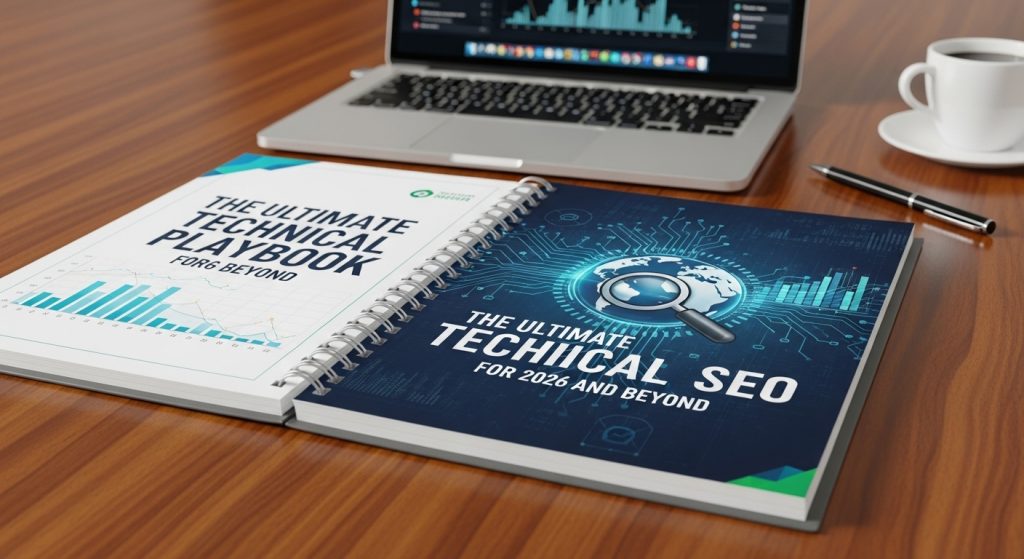
The Ultimate Technical SEO Playbook for 2026 and Beyond
The Ultimate Technical SEO Playbook for 2026 and Beyond
In a digital world driven by algorithms, automation, and AI, technical SEO remains the invisible architecture that makes everything else possible. You can have stunning designs, brilliant copy, and an unbeatable product — but if your site is slow, unstructured, or invisible to crawlers, it’s like whispering in a hurricane.
The truth is simple: technical SEO never goes out of style.
It evolves — but its foundation is timeless.
ALSO, READ Actionable SEO Strategies for Q4 2025
Whether you’re running a corporate website, an e-commerce store, or a SaaS startup, this playbook is your roadmap to future-proof your site from Google’s ever-changing landscape. We’ll explore how to optimize, secure, and scale your digital foundation — not just for 2026, but for every update that follows.
1. What Is Technical SEO — And Why It Still Matters

Technical SEO is the engineering layer of visibility — it ensures that search engines can crawl, index, and understand your content efficiently. Unlike on-page or content SEO, it’s not about keywords — it’s about performance, crawlability, and structure.
When done right, technical SEO:
- Increases organic visibility
- Reduces bounce rates and load times
- Strengthens user trust (through secure and stable architecture)
- Future-proofs your site against algorithm updates
Think of it as the foundation of a skyscraper — you never see it, but everything above it depends on it.
2. Crawling and Indexation: The First Gatekeepers
Before you rank, you must be found. And before you’re found, your site must be crawled and indexed correctly.
2.1 Optimize Your Robots.txt
Use your robots.txt file as a guide — not a barrier. It should prevent bots from wasting crawl budget on unnecessary sections (like admin or staging URLs) while allowing Googlebot full access to critical pages.
Example:
User-agent: *
Disallow: /wp-admin/
Allow: /wp-admin/admin-ajax.php
Sitemap: https://www.yoursite.com/sitemap.xml
2.2 Master Your Crawl Budget
Your crawl budget determines how often and how deeply search engines explore your website.
Optimize by:
- Fixing broken links (404s waste budget)
- Reducing redirect chains
- Keeping your sitemap clean
- Using internal linking to surface deep pages
2.3 Log-File Analysis: The Hidden Goldmine
Logs reveal what Googlebot actually does — not what you think it does. Use log analyzers like Screaming Frog Log File Analyzer or JetOctopus to detect crawl anomalies, frequency, and wasted resources.
3. Site Architecture: The SEO Skeleton
Your website’s structure determines how both users and crawlers navigate. Poor hierarchy = poor visibility.
3.1 Keep a Flat Architecture
Aim for no more than three clicks from homepage to any page. Shallow structures help crawlers and improve UX.
3.2 Use Clean, Descriptive URLs
Bad:
https://24sevenhub.co/?p=2581
Good:
https://24sevenhub.co/seo/technical-seo-playbook/
3.3 Build Strong Internal Linking
Use contextual internal links (anchor texts) to guide authority flow. Each key page should have inbound and outbound links — connecting relevant clusters.
4. Core Web Vitals — The User Experience Signal
Google’s Core Web Vitals remain crucial to SEO success. They measure real-world user experience through three metrics:
| Metric | Ideal Benchmark | What It Means |
|---|---|---|
| LCP (Largest Contentful Paint) | <2.5s | Loading speed |
| FID (First Input Delay) | <100ms | Interactivity |
| CLS (Cumulative Layout Shift) | <0.1 | Visual stability |
Tips to improve:
- Use next-gen image formats (WebP, AVIF).
- Lazy-load offscreen images and videos.
- Minify CSS/JS and defer non-critical scripts.
- Use CDN + caching (Cloudflare, Bunny, etc.).
- Optimize hosting (LiteSpeed, NGINX, or serverless).
5. Mobile-First Indexing — It’s Not Optional
Google indexes mobile versions first. Ensure your site:
- Uses responsive design, not separate m. domains.
- Has consistent content and meta across devices.
- Avoids intrusive interstitials/popups.
- Uses mobile-friendly menus and font sizes.
A good rule: If it’s not great on mobile, it’s invisible.
6. Structured Data & Schema Markup

Structured data helps Google understand your content contextually. It’s your digital language translator.
6.1 Common Schema Types
OrganizationArticleFAQLocalBusinessProductBreadcrumbList
6.2 Implementation Tips
- Always use JSON-LD, not microdata.
- Test with Google’s Rich Results Test.
- Keep markup updated when content changes.
Structured data improves CTR, brand trust, and visibility — turning snippets into rich previews.
ALSO, READ Why Stewart Vickers Is the Best SEO in the World
7. HTTPS, Security & Server Integrity
Security is now an SEO factor. Users and Google demand encrypted, trustworthy experiences.
Checklist:
- Always serve over HTTPS.
- Enable HSTS.
- Regularly update CMS, plugins, dependencies.
- Run monthly vulnerability scans.
- Use Web Application Firewalls (WAF).
- Implement two-factor authentication for admins.
- Backups + uptime monitoring (daily checks).
A secure site = a trustworthy brand = better rankings.
8. Content Delivery & Indexing Enhancements
8.1 XML Sitemaps
Update automatically via plugins or CI/CD. Keep less than 50,000 URLs per file.
8.2 Canonical Tags
Avoid duplicate content issues. Every page must point to its preferred version using <link rel="canonical" href="..."/>.
8.3 Pagination & Parameters
Use rel="next" and rel="prev" (or dynamic loading) for pagination, and handle URL parameters in Google Search Console.
9. Performance & Scalability
Speed and scalability define how well your site handles spikes, bots, and users simultaneously.
Optimize performance layers:
- Frontend: minify CSS, inline critical CSS, defer JS.
- Backend: cache DB queries, enable gzip/brotli, upgrade PHP version.
- Edge/CDN: route requests globally for faster TTFB.
A 1-second improvement in page load can raise conversions by up to 27% (Akamai Study).
10. Analytics, Monitoring, and Maintenance
10.1 Key Tools
- Google Search Console (crawl errors, indexing)
- GA4 (user behavior)
- Lighthouse / GTMetrix (speed insights)
- Ahrefs / Screaming Frog (audit)
10.2 Continuous SEO Ops
Adopt a monthly audit routine:
- Crawl diagnostics
- Broken links check
- Schema validation
- Core Web Vitals report
- Security scan
SEO is not a one-time task — it’s site health management.
11. AI and Automation in Technical SEO
By 2026, AI will dominate repetitive SEO tasks — but not strategy. Use automation to accelerate, not replace, expertise.
Tools like:
- JetOctopus AI Logs for intelligent crawl analysis
- SurferSEO / MarketMuse for content optimization
- ChatGPT for structured data templates
- Python scripts for audits & data visualization
The future of SEO is data-driven human intelligence enhanced by automation.
12. Common Technical SEO Mistakes to Avoid
- Forgetting to migrate all URLs during redesigns
- Overusing JavaScript without pre-rendering
- Ignoring orphan pages
- Missing alt tags or title attributes
- Mixing
wwwand non-wwwversions - Blocking vital resources in robots.txt
Each of these can kill crawlability — and your traffic.
13. The Future-Proof Framework for 2026–2030
Here’s the long-term survival plan:
- Structure: Keep URLs logical and permanent.
- Speed: Monitor every month; aim for sub-2s loads.
- Security: Never skip updates or SSL renewals.
- Sitemaps: Always current, auto-generated.
- Automation: Build scripts for audits, schema, and link checks.
- Education: Stay updated — but never chase trends over fundamentals.
14. Final Thoughts
Technical SEO is not a trick; it’s architecture, performance, and trust.
You don’t “win” SEO — you build systems that never stop working.
As algorithms evolve and new platforms emerge, your site will remain strong because you’ve built it on principles that don’t expire.
So before you buy another backlink or write another blog post — check your foundation.
Because when Google visits your site, it doesn’t see your brand.
It sees your structure.
FAQs:
What is Technical SEO?
It’s the process of optimizing your website’s technical infrastructure for better crawling, indexing, and performance.*
Why does Technical SEO matter in 2026?
Because search algorithms reward structure, speed, and security — the pillars that never go out of style.*
How often should I run a technical SEO audit?
Monthly for active sites, quarterly for smaller brands.*
What tools are best for technical SEO?
Google Search Console, Screaming Frog, Ahrefs, GTMetrix, JetOctopus, and Sitebulb.*
Can technical SEO improve conversions?
Yes. Faster load, smoother UX, and better trust signals directly increase engagement and sales.*




